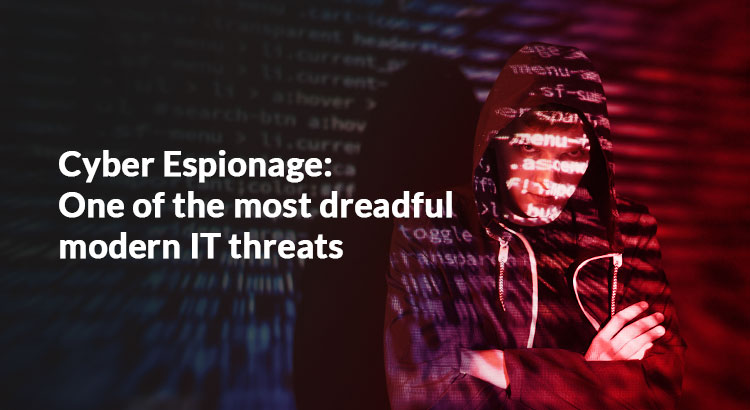Overview
Cyber espionage is a nefarious act of engaging in a single or multiple attack on systems that allows any unauthorized user/ users to secretly view sensitive information without the knowledge of the owner. The major objective of such activities is to acquire intellectual property of corporates or sensitive data belonging to government organizations.
Typically, these attacks are subtle in nature as there is ‘no visible harm’ to the victim, though non-stop spying on the business secrets is a serious breach of conduct and the impact is very damaging. The consequences of cyber espionage can be grave with loss of competitive advantage as business-critical data, strategic blueprints or government secrets no longer remain ‘secret’ as they are supposed to be. The malefactors in this act are motivated by greed and make unexpected profit by misusing the information assets.
A couple of years ago, a 12-year cyber-espionage incident came into light where hackers from one suspected nation from Asia were eavesdropping on different Government agencies and firms of other nations to sabotage their regular IT operations for an indefinite period.
Who are the targets?
The information stolen is used by rival companies or nation states. Sometimes, it is even sold to some higher bidder or to the dark web. There are two conventional targets for cyber espionage:
- Governments: Government organizations possess the most sensitive information of a country. Most of the Government organizations are increasingly getting digitized. With the incorporation of new technologies, the work processes have turned time-saving and most case-sensitive data are stored digitally. This has prompted cyber crooks to take unauthorized possession of the data.
- Corporates: Global businesses are continuously at risk from cyber espionage. The spies are lurking in every sphere of possible data sources to covertly access information that can badly affect the victim – by damaging the brand reputation and business trust. Corporates from every possible industry have become more or less victims of espionage.
Forms of Cyber Espionage:
Two major or common forms of cyber espionage are –
- Spear phishing/ Phishing: Among all, this is the most attempted form of this crime. Common phishing is quantitative in nature, whereas spear-phishing is more qualitative and target-oriented. This target can be geography, industry or even a specific piece of data. It requires lots of research about the potential victim.
- Malvertising: Sometimes, cyber criminals use malicious advertising strategies to compromise data. They misuse the medium of online advertising to snag the target. These advertisements are too convincing to prevent any kind of malicious intention behind. Once clicked, the victim is immediately routed to the hostile server for the rest of the attack.
How to Prevent?
Threats like cyber espionage can remain undetected in a particular network for months. Eventually, when the criminal gang is busted, enterprises by then suffer huge losses. There are some easy and advisable precautionary IT security measures to stop cyber espionage at the roots.
- Endpoint Security: Today most of the spying incidents happen due to unmanaged and unmonitored endpoints. A secured Endpoint Management helps mitigating targeted attacks including malware and ransomware threats.
- Rule and Role-based access: With the help of advanced security tools like Privileged Access Management (PAM), User Behaviour Analytics (UBA), user restriction on the basis of authentication process can deter suspicious activities. As critical data assets are consistently under threats of misuse from malicious corporate elements, organizations need to strengthen security with a rule and role based access.
- Robust Password Management: Breaking through a password is the only way to access every confidential data file. Hence, enterprises should always ensure randomization and rotation of passwords to put an end of unauthorized data access.
- Segregation of database: There is a saying, “Don’t put all your eggs in one basket”. Similarly enterprises in IT security should ensure proper and multiple segregation of data that can minimize the risks to a large extent. A single database would simply make the job of a data spy easy.
- Monitoring user behaviour: Lastly, seamless monitoring of every user behaviour is the ultra-modern way to assess IT risks. Any kind of unconventional behaviour from insiders, third-party users, partners, external auditors, MSPs or even ex-employees should be detected and flagged off to the administrators on time. AL/ ML based User Behaviour Analytics (UBA) tool has been in high demand today to deter cyber espionage.
Conclusion
Cyber espionage is rising. This threat, if not taken seriously on time, can put business processes and progress at ransom. Training the employees and spreading awareness about cautious IT behaviour can largely reduce the risks associated with cyber espionage.

